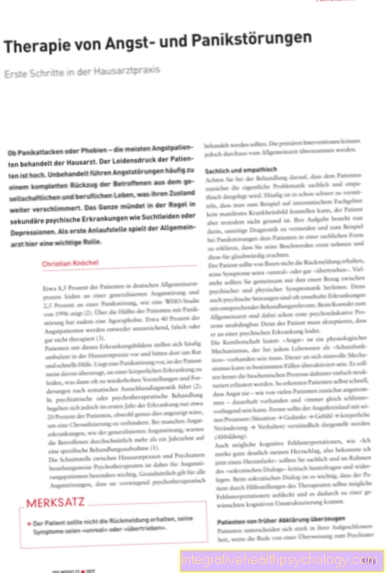Body mass index
Synonyms in a broader sense
BMI, mass index, quetelet index
Overweight, Obesity, Obesity, body fat
What is the body mass index?
The BMI is a key figure that can be used to assess whether and, if so, how much overweight a person is and enables a classification. The body mass index is recommended by the World Health Organization (WHO) as a guideline. The BMI disregards gender, age and stature and only applies to adults.
For people under the age of 18, so-called percentile curves (reference curves) were created based on the BMI. Here growth, age, gender were included in the calculation and summarized in tables. These tables are used to assess the body weight of children and adolescents.
Calculation of the BMI
The formula for calculating the BMI in adults goes back to the Belgian mathematician Adolph Quetelet and is:
Weight / kg
BMI = -----------------------------------
Height x height
The following weight classifications result from this:
- Underweight: <18,5
- Normal weight: 18,5 - 25,0
- Overweight: >25,0
- Pre-obesity: 25,0 - 30,0
- Obesity grade I: 30,0 - 35,0
- Obesity grade II: 35,0 - 40,0
- Obesity grade III: >40,0
Since the given formula ignores both the muscle and fat percentage of the person concerned, a more differentiated consideration of the body composition would, among other things, to the use of the bioelectrical impedance analysis (BIA) to guess. By differentiating between fat and muscle tissue, this can make a higher quality statement about a person's training and health status than the BMI alone.
Underweight
From Underweight one speaks when the BMI falls below 18.5. At first this is not a pathological condition, but it does involve Health risks and a medical check-up is necessary.
Insufficient supply of important nutrients can affect health. Especially with young people, a eating disorder be thought. Serious illnesses can also lead to being underweight.
Normal weight
According to BMI (body mass index) the range of normal body weight is between 18.5 and 25.0.
This classification is not uncritical. Sporty people with increased body weight due to increased Muscle mass (Muscles weigh heavier than adipose tissue) and "overweight BMI" should also include the Waist circumference measure and determine the body fat percentage. The BMI (body mass index) only takes into account body weight and height, but not those Body composition.
In general, well-trained people weigh more than unsportsmanlike people due to their increased muscle mass.
The so-called normal weight also increases with age.
While the optimal BMI for 19- to 24-year-olds is between 19 and 24, the “green area” for 45- to 54-year-olds shifts to 22 to 27 and seniors from 65 years of age can have a BMI of 24 to 29.
Since men usually have more muscle mass than women, the German Nutrition Society (DGE) also differentiates according to gender. So is attached young men a BMI of 20 to 25 is within the normal range.
Pre-obesity / overweight

A BMI (body mass index) of 25.0 to 30.0 is generally used as Obesity or in the medical parlance of Pre-obesity. However, the criteria already mentioned above such as age, gender, level of training and risk factors should be included in the assessment.
The decision as to whether weight loss is needed should primarily be based on the presence of certain risk factors such as high blood pressure, increased blood sugar, increased fat levels in the blood, increased uric acid or from Joint problems be made dependent.
People with a BMI over 25 and under 30 are usually not yet exposed to the risks mentioned. But there is a chance that one day you will have a BMI over 30.
This assumption is based on the fact that people in industrialized countries gain about 5 kg on average within 10 years.
Please also read our topic on this Consequences of being overweight.
Obesity / very overweightGrade 1 obesity
From a BMI of 30 to 35, there is severe overweight (obesity), other risk factors are often present and mortality is increased. Here medical control and weight reduction through diet changes and more exercise are necessary.
Grade 2 obesity
The BMI (body mass index) is between 35 and 40 and that Health risk is greatly increased. In addition to the so-called basic therapy (change in diet, exercise), drug therapy is also necessary in some cases. If there are serious secondary diseases, surgical therapy is also considered, e.g. "Gastric banding'.
Grade 3 obesity
With a BMI over 40 and a body weight of mostly more than 130 kg, there are considerable health risks.
Approx. 1% of the population in the Federal Republic of Germany have a BMI over 40. Basic therapy results in a weight reduction of more than 15% in only 1 - 3% of these people. Surgical therapy is always considered here.
Broca weight
Until a few years ago, the so-called Broca formula was used to assess body weight. It is:
Broca weight = body length (cm) - 100
Example: normal weight with a height of 170 cm = 70 kg.
The ideal weight for men was 10% and for women 15% below the Broca weight. One advantage of this method was the low computational effort. It is no longer needed today.
Further information
More information on the subject Body mass index can be obtained from:
- theme Obesity
- Obesity
- Lose weight
- Forms of obesity
- Overweight in children
- Determination of body fat
- Assessment of body weight
- Obesity and psychology
- Obesity causes
Further General informationyou might also be interested in:
- Body measurements
- Determination of body fat
- Adipose tissue
- Assessment of body weight
- Calorie-conscious diet
- Wholesome nutrition
- eating disorder
- Appetite suppressants
- Underweight
- Bioelectrical impedance analysis
All topics that have been published on the field of internal medicine can be found at: Internal medicine A-Z




.jpg)
























